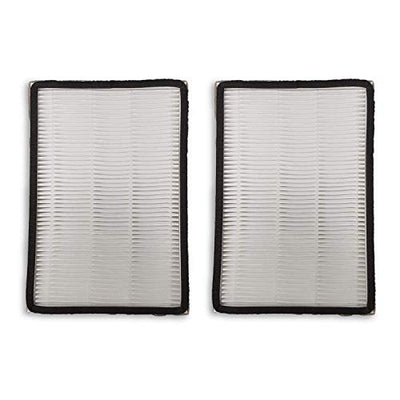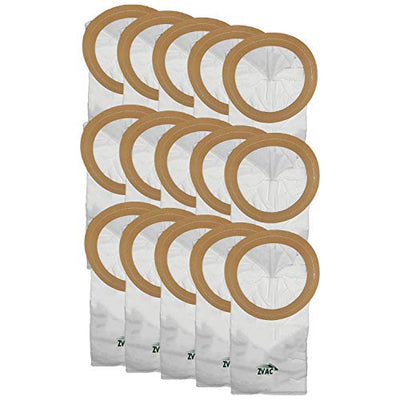Top Tips to Vacuum Properly on Any Type of Flooring

The average home has more than one type of flooring inside, and you may find it difficult to keep them all clean with your vacuum. Although mopping tiles and sweeping hardwood may be on your chore list, it is possible to vacuum properly on any type of flooring and get excellent results. In fact, you may end up with a cleaner floor, better indoor air quality, and less wear and tear on the flooring materials than you would with other methods. Explore the tips below to maximize the clean in your home and use your vacuum properly on every surface.
General Vacuuming Tips for Maximum Cleanliness
Very few people list vacuuming as one of their favorite chores at home. You need to get out the machine, attach all the tubes and hoses, and move the sometimes-heavy apparatus around the house to get every floor. Many people dislike this important task more because they do not get the results they want when it comes to cleanliness or reducing dust and allergens.
These vacuum tips will help you get the clean results you want, improve indoor air quality, and make the entire process simpler and faster. You can use your everyday vacuum on distinct types of flooring with ease as long as you purchase the right type to begin with and use the best attachments every time.
Stick to a Routine
Never wait until your floor looks dirty to get out the vacuum cleaner and plug it in. If you do this, the dust, debris, and other dirt have already become enmeshed with the fibers of your carpet. This is also important on hardwood and tile floors because even the smallest amount of grit can scratch the finish if you do not clean it regularly.
Schedule your vacuuming chores at least once per week. Some people prefer to do the whole house on one day while others split it up to tackle all the cleaning in each room on different days throughout the week. Either method is fine as long as you stick to your schedule.
Do Not Rush

It takes time for the airflow through your vacuum cleaner to suck up the dirt from the piece of floor it covers. Running the head over the carpet or other flooring as quickly as possible will not allow for maximum vacuum power. It may get off surface dirt, but you will not get a deep clean if you rush. If your machine has a beater head, it also needs time to fluff up the carpet fibers to get even more dirt out.
Also, do not go over each square foot of flooring just one time. Make multiple passes to maximize the effect. Do at least one forward and one backward pass over every surface. In high traffic areas, boost those numbers up considerably and add in additional directions to help fluff up the carpet fibers.
Clean Your Vacuum

Clean your vacuum after every use and make sure it is ready to go before you turn it on again. This includes replacing the vacuum bag, emptying the canister, brushing or washing every filter inside, and removing hairs or other debris from the beater brush or head. Pay attention to the manufacturer's instructions so you know what you can remove and wash and what you should leave alone. It is also helpful to check all the tubes and hoses for obstructions or build up that cannot negatively affect the suction power.
Vacuum Tips for Different Floor Types
Chances are, you have many unique types of flooring materials in your home. These frequently include wall-to-wall carpeting, hardwood or laminate floors, a collection of area or throw rugs, and tile in kitchens and baths. While vacuuming is not the best option for all of these, it can still help maintain your home to a high degree of cleanliness on a regular basis. Follow these tips to get the most out of your vacuum cleaner and keep your house sparkling clean.
Wall-to-wall Carpeting
Most people think of this floor type when they reach for their vacuum. There is really no other way to clean wall-to-wall carpeting then with an upright or canister vac. For very short pile or loop carpets, you can get away with a plain vacuum head without a beater brush. Use it frequently before the dirt has a chance to sink down to the fibers to the carpet base.
For deeper pile carpets, a rotating brush head or beater brush maximizes the efficacy of your vacuum's power. This rhythmically hits the carpet fibers, fluffs them up, and vibrates the dirt and debris out from between them so you can suck them up and throw them away.
Area Rugs or Throw Rugs
If you want to vacuum rugs that lay over hardwood, laminate, or tile flooring, use the same techniques as for wall-to-wall carpeting described above. However, do not drag the vacuum head over the edges of the rug, especially if they have fringe or another type of decorative border. The last thing you want to do is damage the area rug itself.
If you do decide to vacuum the edges, work from the inner portion of the rug out so it stays smooth against the floor. Also, remove beater brushes or rotating heads when working with fringe. Cleaning smaller throw rugs usually works better if you take them outside, hang them up, and hit them with a rug beater or a flathead broom to knock the dust and debris out.
Hardwood Floors

If you are like most homeowners, you clean your hardwood floors regularly with some type of dust mop or broom. However, if you have a powerful vacuum with interchangeable heads, you can use it to keep your hardwood free of dirt and grit on a regular basis. You must be careful not to damage the wood itself or the finish on top.
Never use a beater brush or hard bristles on a hardwood floor. A smooth head or one with cloth pads specifically designed for wooden boards works best. For edges and hard-to-reach areas, a soft-bristle brush can help. These are also good for cleaning woodwork and trim with grooves or other three-dimensional decorative characteristics.
If you always reached for a broom before, you should understand how difficult it is to get all the dust and dirt up with it. A vacuum with great suction can transform how you keep your beautiful floors clean.
Tile Floors With Grout or Grooves
Many homes have tiles only in the kitchen and bathrooms. These are two places in your house where you undoubtedly need more cleaning power than a simple vacuum to get the results you want. With spills, fallen foods, drips, and germs, mopping tile floors with a sanitizing solution is frequently the best option. However, you can still use your vacuum to handle the accumulation of dust, hairs, or other debris with ease.
Vacuuming tile floors works pretty much the same way as using this type of machine on hardwood as described above. In general, tiles are harder than wood, so you could use a rotating beater brush in many cases. You would have to make your own determinations about the specific flooring material in each room of your house. In most cases, you can easily suck up the debris from tile with an ordinary vacuum head. After all, there are no thick carpet fibers or crevices for it all to get stuck in.
A Note About Indoor Air Quality

Inefficient cleaning of any type of flooring material in your home can lead to more problems than a dirty or dingy appearance. Dust, pet dander, hairs, and other types of debris settle on every floor surface and can contribute to reduced air quality if you do not vacuum regularly. Besides sticking to your schedule and using the right type of system for the flooring type, also opt for a vacuum with a certified HEPA filter, maximum filtration bags, and other features that help you keep your home as healthy as possible. This is especially important if you have family members or friends with asthma, allergies, or chronic respiratory issues.
Taking care of all the distinct types of flooring in your home is easy when you have a high-quality vacuum cleaner with many different attachments and heads. Whether you have carpeting in every bedroom, hardwood in the hall, and tile work in the kitchen, you can use your vacuum cleaner to keep things dust and debris free. The most important tip of all is to purchase a reliable and powerful vacuum from the start. These long-lasting models will help you keep your home in beautiful condition all the time.
Visit ZVacuum.com for HEPA filters and HEPA bags.

















